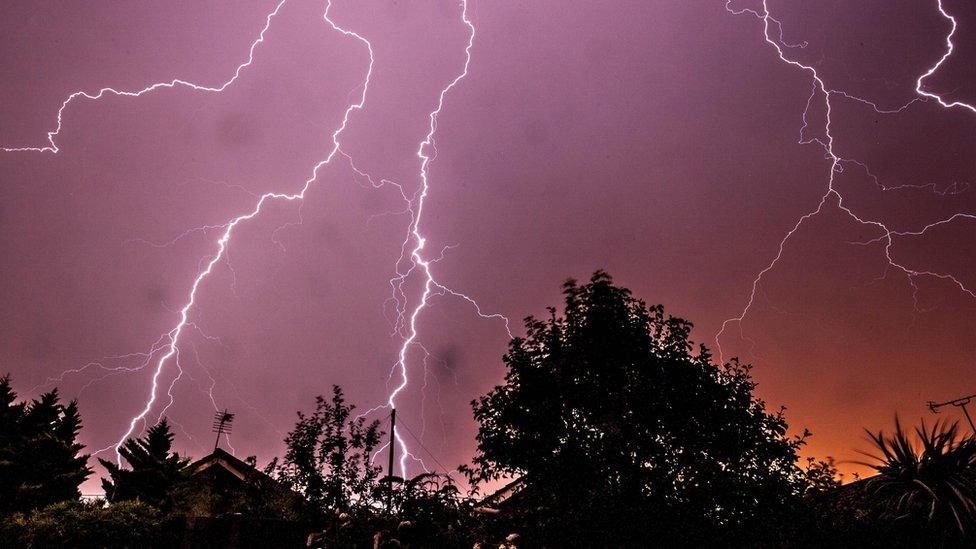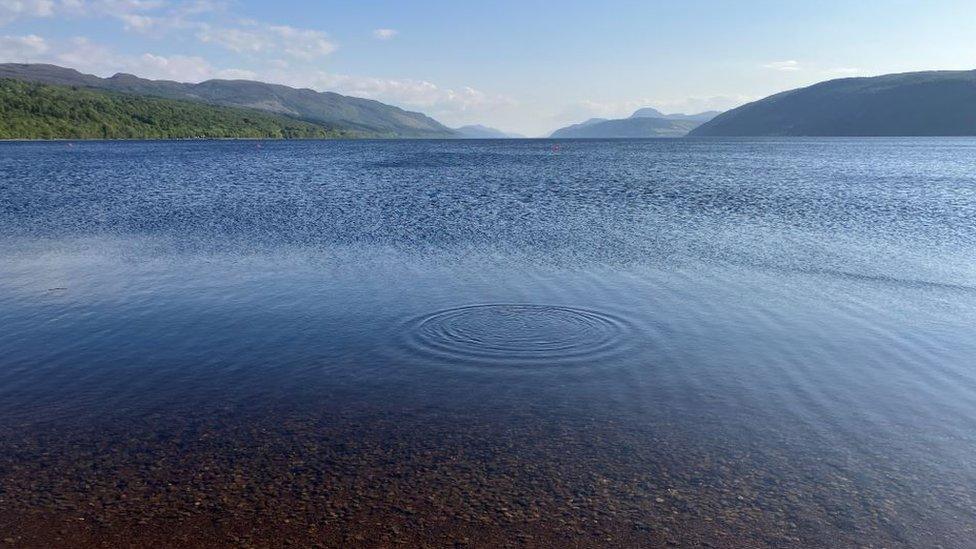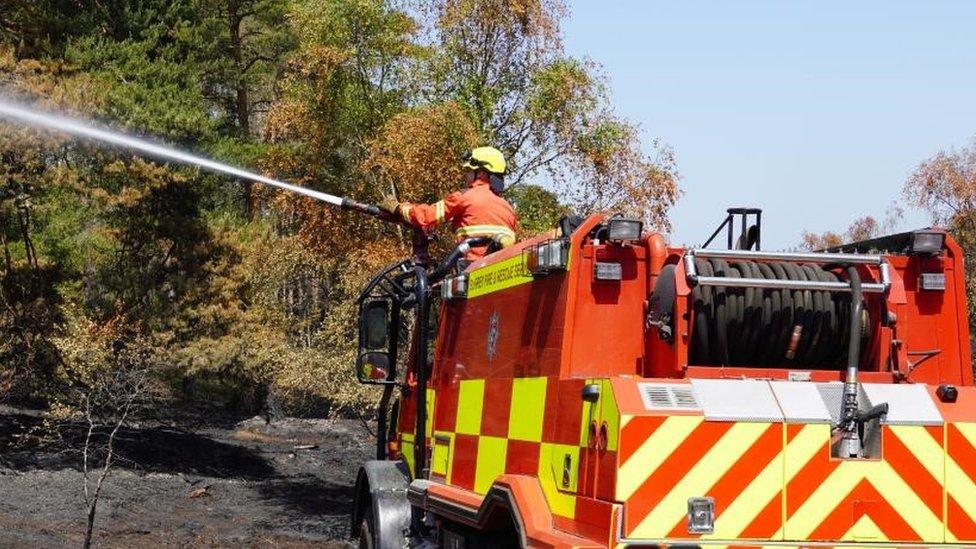Thunderstorms and hail to sweep across Scotland
- Published

The yellow weather warning is in place from 12:00 to 21:00 BST on Sunday
Thunderstorms and hail are expected to sweep across Scotland as a result of high temperatures.
The Met Office has issued a yellow warning affecting much of the west coast and Highlands from 12:00 until 21:00 BST on Sunday.
Forecasters said conditions would include lightning strikes, strong winds and "torrential" rain in some parts.
Further warnings for thunder affecting the north east and Dumfries and Galloway are in place for Monday.
Again these will last between 12:00 and 21:00 BST.
The nature of showers on Sunday will be scattered, meaning some parts within the warning area will remain dry.
The areas experiencing the worst rain could see 30-40mm in an hour.
There is also a small chance that homes and businesses could be flooded quickly, with damage to some buildings from floodwater, the Met Office said.
The warning extends to Wales and central and southern parts of England.
Allow X content?
This article contains content provided by X. We ask for your permission before anything is loaded, as they may be using cookies and other technologies. You may want to read X’s cookie policy, external and privacy policy, external before accepting. To view this content choose ‘accept and continue’.
It comes after an extended spell of hot, dry weather across the UK.
Temperatures reached 29.8°C in Auchincruive, Ayrshire, on Saturday - making it the warmest day of the year in Scotland.
A temperature of 30.4°C in Northolt, west London, and Wisley, Surrey made it the UK's hottest day of the year too.
Earlier this week the Scottish Fire and Rescue Service issued a Scotland-wide warning of a "very high" wildfire risk, which remains in place until Saturday.
A wildfire near Cannich in the Highlands had been burning for almost two weeks and caused extensive damage to an RSPB Scotland nature reserve.
Meanwhile the Scottish Environment Protection Agency (Sepa) has reiterated warnings on water scarcity.
Its most recent report on Thursday, external said the issue was most acute around Loch Maree in Wester Ross, increasing the risk in the area to "significant".
The agency also said Loch Ness - Scotland's largest freshwater loch by volume - had dropped to its lowest water level in 32 years last month amid dry conditions.
Related topics
- Published10 June 2023

- Published8 June 2023

- Published9 June 2023
